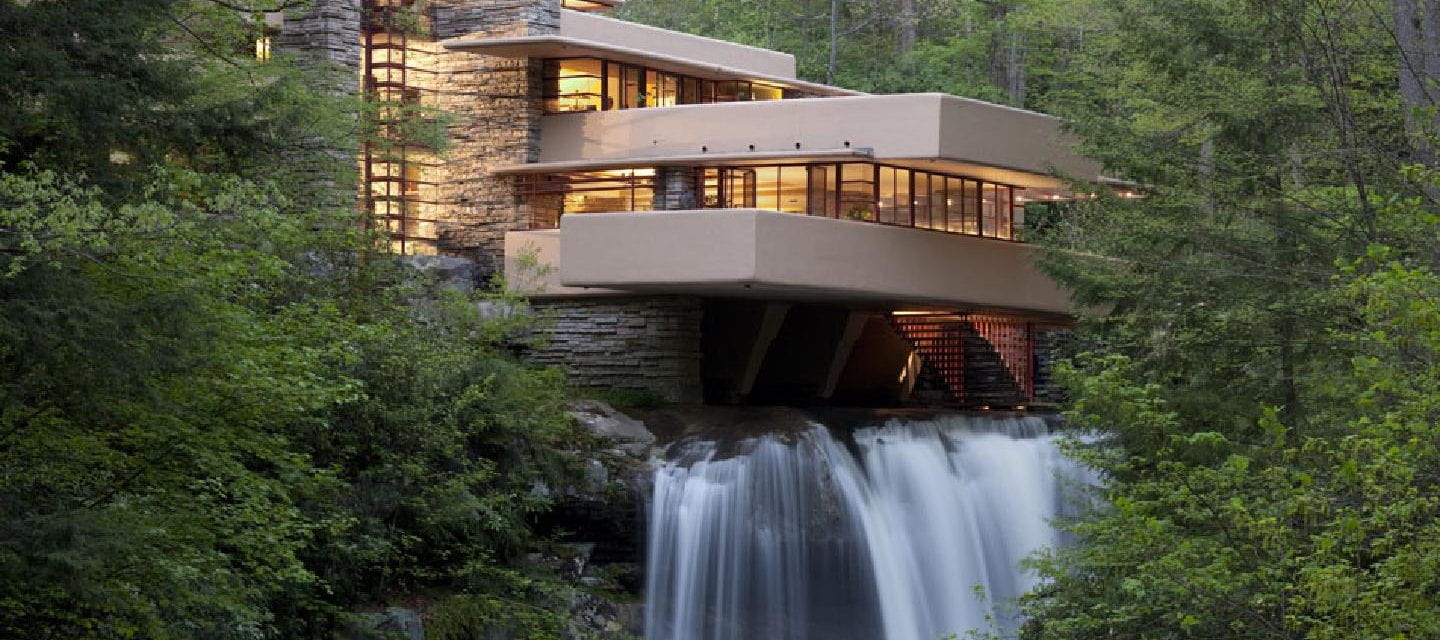How do we relate our life to the environment? This was a question Thomai posed in the lecture this week that stuck with me. Residences play a large part in people’s lifestyles and emotions. I believe that this question is important to pose when studying or working in this field because interior design and architecture can vastly change the answer to it. Frank Lloyd Wright’s Fallingwater was built from 1934 until 1937 in Pennsylvania, USA. It uses load bearing beams to hold trays of concrete. The horizontality of the house brings it closer to the ground and it is able to sprawl across the rocks it perches on. Frank Lloyd Wright decided to place the residence right above the waterfall rather than looking at it, integrating the inhabitants into the world around them. Another project by Frank Lloyd Wright, that integrates the inhabitants with the environment around them is his former residence, Taliesin West in Arizona, USA. The home is one with the environment and isn’t just a home it is also the landscape. The structure was created using the rock from the environment around it. Wright was fascinated with the nomadic lifestyle of Native Americans and thus created a communal living room. The space created an abstracted formation inspired by tents used by Native Americans which he studied. Another example of architects in this modernist period finding ways to relate structures and thus our lives to the environment is a project that was never built. Mies van der Rohe was a German-American architect born in Germany and lived in Europe until 1937. In 1937 he created commissioned designs for a residence called Resor House. Though it was never built, the collages and models he created showed integrating life and homes into the environment in a really amazing way. The part I find most fascinating is that one of the ‘walls’ of the house would be made of an existing rock formation. I love this concept and think using the exterior environment to create walls is such a great idea that could create really interesting spaces.
Reading questions:
Richard Buckminster Fuller, “The Cardboard House”, Perspecta, Volume 2, 1953 Bill Voyd, “Drop City” in Paul Oliver, ed., Shelter and Society, London, 1969.
- How did the shape of these structures impact the experience of those living in them? What can we learn from the people that built them?
- Should we as designers implement the pattern making used in these domes?
Peder Anker, “The Closed World of Ecological Architecture”, The Journal of Architecture, Volume 10, n 5, 2005.
- Do you think ecological architecture could be successful today?
- What can we learn from this period to make architecture and interior design more sustainable?



